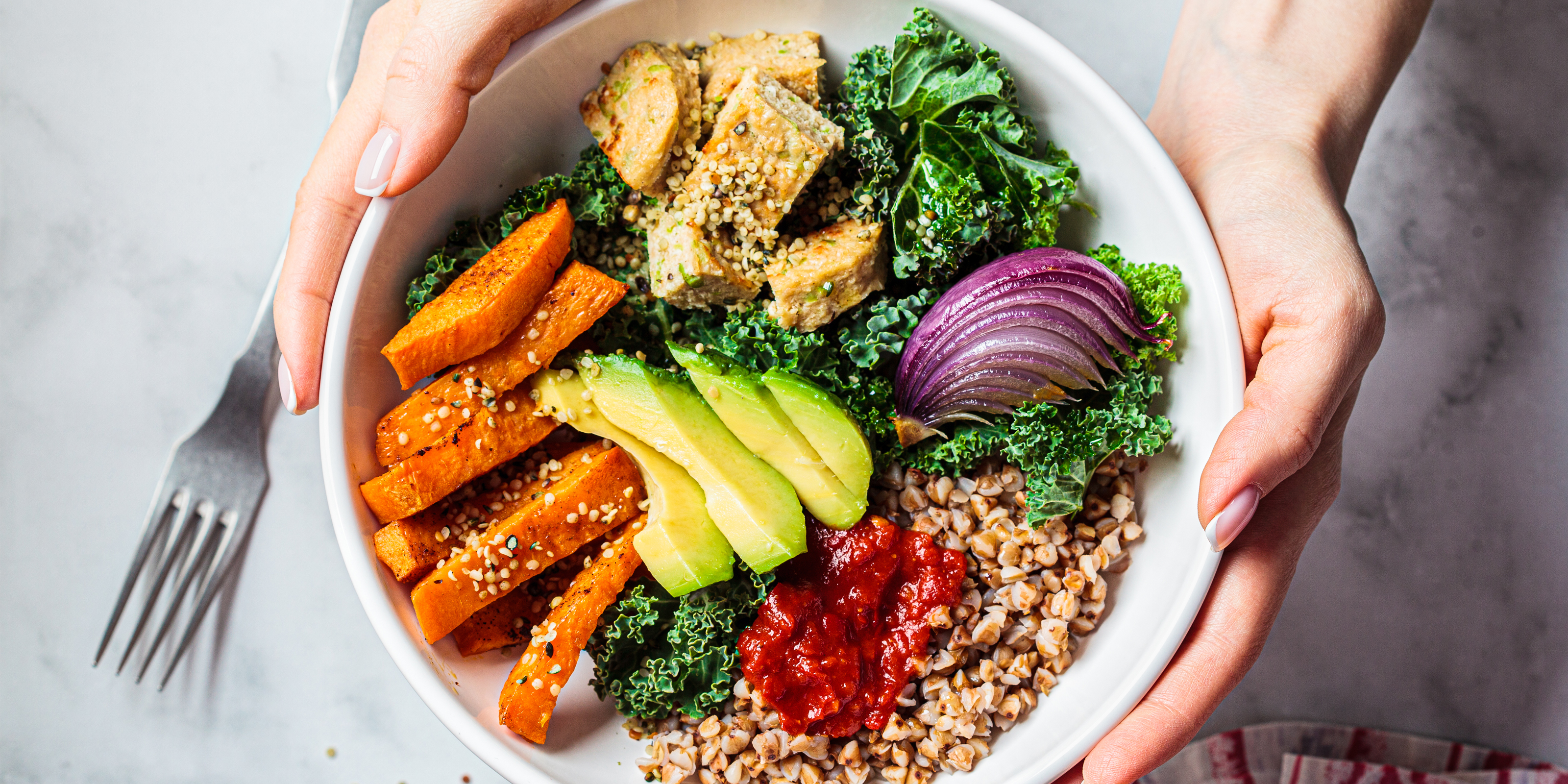Paleo diet vs keto: The difference explained

- residence
- Recommendations

When it comes to the paleo or kato diet, which one is better? It is easy to say that the popularity of these diets has skyrocketed in recent years. Many people are seduced by the claims of attractive health benefits and want to try it. However, it can be difficult to determine which of these methods is the most beneficial for your health.
At first glance, the paleo diet and the keto diet seem almost the same. Both systems claim to be more compatible with the needs of the human body than traditional Western products. Both promise quick and easy weight loss and better health outcomes. However, a closer look reveals some key differences that need to be considered before jumping to conclusions. Paleo and keto diets are not comparable when it comes to their nutritional value, flexibility, or possible side effects.
In this article, we will explain the basic principles and the similarities and differences between Paleo and Keto so you can decide which of these diets is best for you.
What is the paleo diet?
The term "paleo diet" was first coined in 2002 by Dr. J. Lauren Corden to describe a diet that reflects the habits and eating habits of pre-agricultural Paleolithic hunter-gatherers. It is also known as "stone age food", "cave food", or "staple food".
While we know little about what our ancestors ate every day, it is believed that their diet consisted primarily of lean meats, fish, seafood, fruits, vegetables, seeds, and nuts. Foods such as cereals, cereals, dairy products, and refined oils were introduced later and are therefore usually not included in the Paleo diet.
According to a study published in Science of the Total Environment , the Paleo diet is low in carbohydrates (about 25% of total energy intake) and high in protein (about 30% of total energy intake), cholesterol and polyunsaturated fats. Acid (about 15% of total energy consumption). The food quality score drops to 260, placing the paleo diet above the recommended standard.

What is the keto diet?
The ketogenic diet has been shown to help prevent seizures , which is why it was first introduced to treat epilepsy in the 1920s. Because people with epileptic seizures respond well to fasting rules, clinicians wanted to find ways to mimic the metabolic effects of fasting without depriving their patients of food. This technique was successfully used for almost two decades, until antiepileptic drugs were introduced into medical practice. When nutritionists realized that the ketogenic diet could lead to quick weight loss results, it quickly became popular.

The ketogenic diet is high in dietary fat and low in carbs, making it similar to the Atkins diet. The difference is that if you take Atkins over a period of time, you are allowed to gradually introduce carbohydrates into your diet. While on a ketogenic diet, always keep carbs low. The goal of this procedure is to achieve ketosis , a metabolic state in which the body metabolizes fat instead of glucose. Ketosis is characterized by low insulin levels and high ketone levels. Ketones are compounds produced by the liver from fatty acids and used to fuel muscles and other tissues.
Nutritionally, the ketogenic diet consists of approximately 75% dietary fat, approximately 15-20% protein, and up to 10% carbohydrates. The amount of net carbohydrates (total carbohydrates minus fiber) in food should not exceed 25 grams. To achieve this, ketogenic diets are primarily based on meat, fish, eggs, nuts, seeds, oils, and fatty foods, as well as some vegetables (such as low-carb vegetables, onions, or tomatoes). Fruits, grains, legumes, legumes and basic vegetables are not included.
Paleo Diet vs Kato: Mill
principles
The Paleo and Kato diets have many principles in common. Both deal with their self-confidence when they decide to start their own gaming activities. They also agreed to avoid various food groups. For example, both diets exclude grains, legumes, and lemons. This is due to the general fact that grains and legumes were not present in the early paleo diet. The keto diet eliminates them due to their high carbohydrate content.
Both paleo and keto diets encourage a high intake of dietary fat, ideally in the form of monounsaturated and polyunsaturated fats from sources such as olive oil, avocados, nuts, seeds, and fish. In addition, both advise not to process or consume trans fats due to their adverse effects on the cardiovascular system.
medical institutions
Paleo and keto diets can have the same impact on our health and body composition. A study published in Nutrients found that a ketogenic diet can help you lose weight faster and reduce your risk of type 2 diabetes, cardiovascular disease, and certain cancers. It may also have beneficial effects on gut health and appetite control.
Similarly, a number of studies, including one published in the journal Advances in Nutrition , show that the Paleo diet can significantly reduce body weight and waist circumference, as well as improve blood pressure, lipid profile, and systemic inflammation.
In addition, new data published in Psychiatry Research suggests that both treatments may have positive effects on our mood and mental health, although more research is needed to confirm these findings.
Paleo Diet vs Kato: The Difference
The biggest difference between paleo and keto diets is ideal nutrition, or lack thereof. The Kato Diet is about changing your eating habits, while the Paleo Diet is about a lifestyle. Paleo fans encourage participation in HIIT (high intensity interval training), yoga, meditation, and meditation.
In addition, there are some important differences regarding nutritional components. While keto specifically limits carbs, Paleo allows them as long as they're not from a whole food source. Keto recommends eating lots of dairy products like whole milk, butter, and plain yogurt. Because they didn't exist in the Paleolithic, you won't find them in any Paleo handbook. Consuming soy foods like tofu, tempeh, and soybeans is also enriched with a keto diet. In contrast, Paleos does not allow soybeans because they are legumes.

health risks
Following a ketogenic diet may have some benefits, but there are also some risks. Over the years, many questions have been raised about its safety and long-term effects. For example, an article published by Harvard Medical School notes that the high fat content of keto may contribute to an increased risk of heart disease, liver problems, and kidney stones, especially in people with certain genetic predispositions. In addition, low fiber levels can lead to digestive problems.
In addition, many have reported that the keto diet causes temporary flu symptoms , which has led to the currently popular term "keto flu." These symptoms may include headaches, fatigue, nausea, dizziness, brain fog, gastrointestinal upset, low energy, fainting, and changes in heart rate. Keto may not be a good option for you if you have low blood pressure.
Following the Paleo diet can also come with some risks. Because it excludes many food groups, it may contribute to certain micronutrient deficiencies. In particular, stores of calcium and vitamin D, which are important for bone health, may be low.
Paleo Diet vs Kato: Which is Better?
Both paleo and keto diets have their pros and cons. Unless you're a victim of a chronic condition, the final verdict may be about cost, service, and flexibility. The paleo diet offers more food options, but it can also be very expensive. At the same time, keto can be more limited and difficult to maintain in social situations. Overall, Paleo could be a safer, healthier, and more flexible food choice.
Recommendations
Arab A., Mehrabani S., Moradi S. & Amani R. (2019). The connection between food and mood: a systematic review of the current literature. Psychiatric Research, 271, 428-437. https://doi.org/10.1016/j.psychres.2018.12.014
Cambes-Franco S., Gonzalez-Garcia S., Feijoo J. and Moreira M.T. (2021). Is the paleo diet safe for health and the environment? Macroecology, 781, 146717. https://doi.org/10.1016/j.scitotenv.2021.146717
Dawis, K. & Banga, S. (2021). Potential Health Benefits of the Ketogenic Diet: A Descriptive Review. Nutrition, 13(5), 1654. https://doi.org/10.3390/nu13051654 .
Gedi, J.; Muhammadi, M., Muhammadi, H., Ramzani, Jalfai, N. Malikzade, c. , Hosseinzadeh, m, Salehi Abarkawi, a. (2019). Effects of the Paleolithic Diet on Risk Factors for Cardiovascular Disease: A Systematic Review and Meta-Analysis of Randomized Controlled Trials. Advances in Nutrition, 10(4), 634-646. https://doi.org/10.1093/advances/nmz007
Harvard Health. (2020, August 31). Should you try the keto diet? Retrieved April 22, 2022 from https://www.health.harvard.edu/staying-healthy/should-you-try-the-keto-diet .
Anna Gora writes health articles for Future plc and works for Coach, Fit & Well, LiveScience, T3, TechRader and Tom's Guide. She is a personal trainer, nutritionist and certified health trainer with nearly 10 years of professional experience. Anna holds a Bachelor's degree in Nutrition from the Warsaw University of Life Sciences, a Master's degree in Nutrition, Physical Activity and Public Health from the University of Bristol, and several certifications as a Health Coach. She is passionate about empowering people to live healthier lives and improve the benefits of a vegetarian diet.